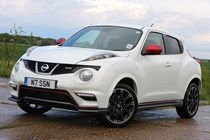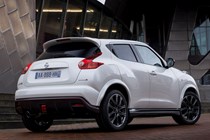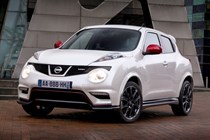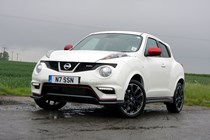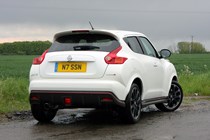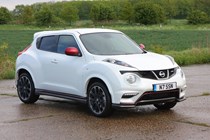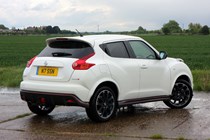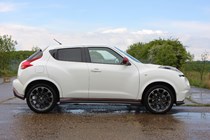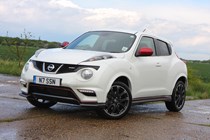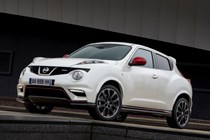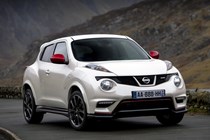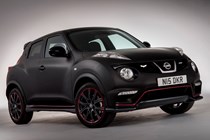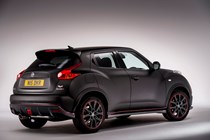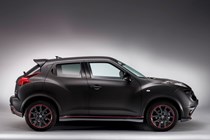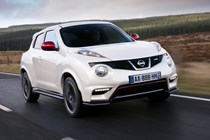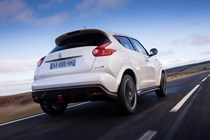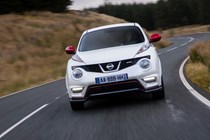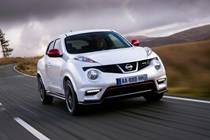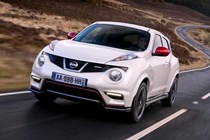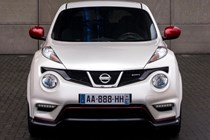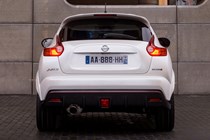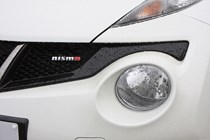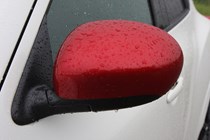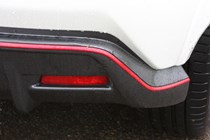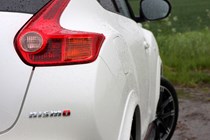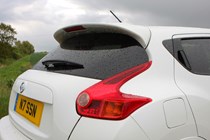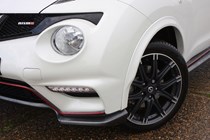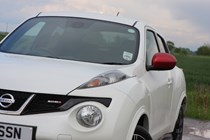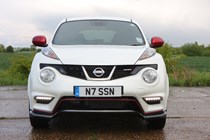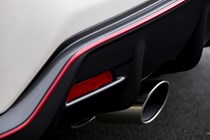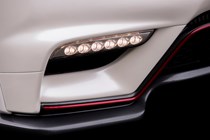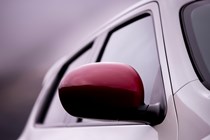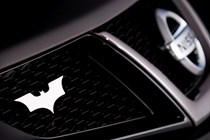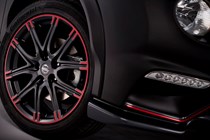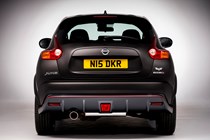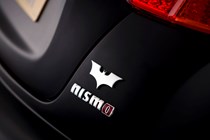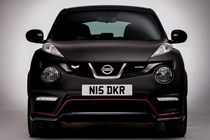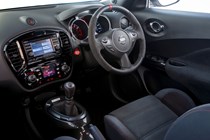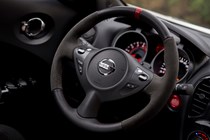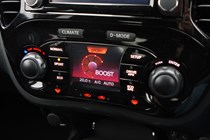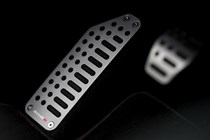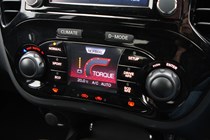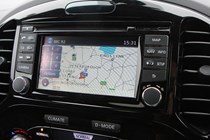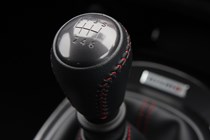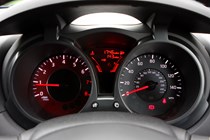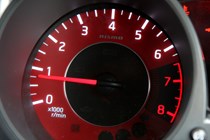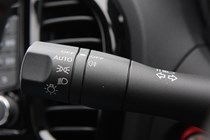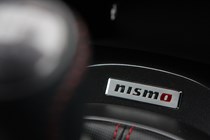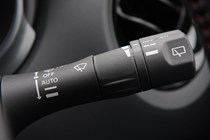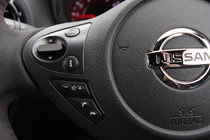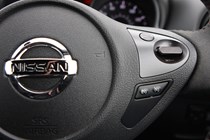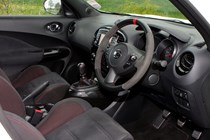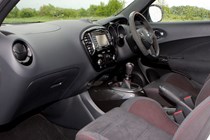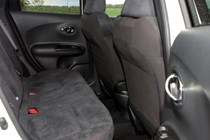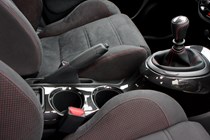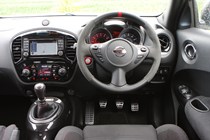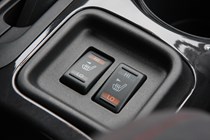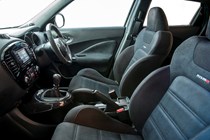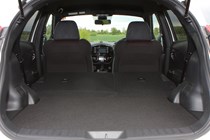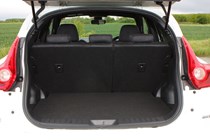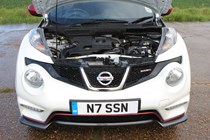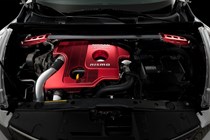
Nissan Juke Nismo (2013-2018) engines, drive and performance

The Nissan Juke Nismo uses the same 1.6-litre turbocharged petrol engine as the regular Juke Tekna DiG-T it’s based on. Nissan’s engineers have lightly breathed on it to release an extra 8bhp over the regular model, taking the total power output to just under 200bhp.
With only a modest increase in power, the Juke Nismo isn’t mind-alteringly quick but it is fast enough to be fun.
Like many turbocharged engines, it’s a little slow to pick up if you let the revs drop but once into its stride it pulls strongly. The same engine, incidentally, will be used in the 2013 Renaultsport Clio.
Both the six-speed manual front-wheel drive and CVT automatic four-wheel drive versions of the Nismo have the same power output of 197bhp.
The front-wheel drive car is the quicker of the two, achieving 0-62mph in 7.8 seconds and a top speed of 134mph (compared with 8.2 seconds and 125mph for the CVT). Nissan expects the two-wheel drive car to comfortably outsell the all-wheel drive version.
Ultimately, the Nismo machine is a lukewarm hatch rather than a serious hot hatch rival, but the faster version with different suspension and more power due before the end of 2013 may fulfil that role yet.
The Nissan Juke Nismo benefits from stiffer springs over the standard car and an altered steering rack.
The stiffer suspension means less body-roll in the corners than the standard Juke, which makes for a more rewarding driving experience. Body control is very good, and although the ride is firm it’s fairly comfortable on bumpy roads.
The steering is nice and precise, and while not brimming with feedback it helps the driver to place the car accurately. Overall, the handling is playful enough to keep keen drivers happy yet still remains safe and predictable.
All-wheel drive Nismos get the same clever torque vectoring system as the regular 4WD Juke – this is a system which shuffles the car’s power between all four wheels to keep it on the right line when cornering.
Power is sent only to the front wheels when the car is travelling in a straight line, and then partially sent to the rear wheels when the driver begins steering. The largest amount of power goes to the outside rear wheel to help steer the car towards the inside of the corner and help prevent it running wide.


